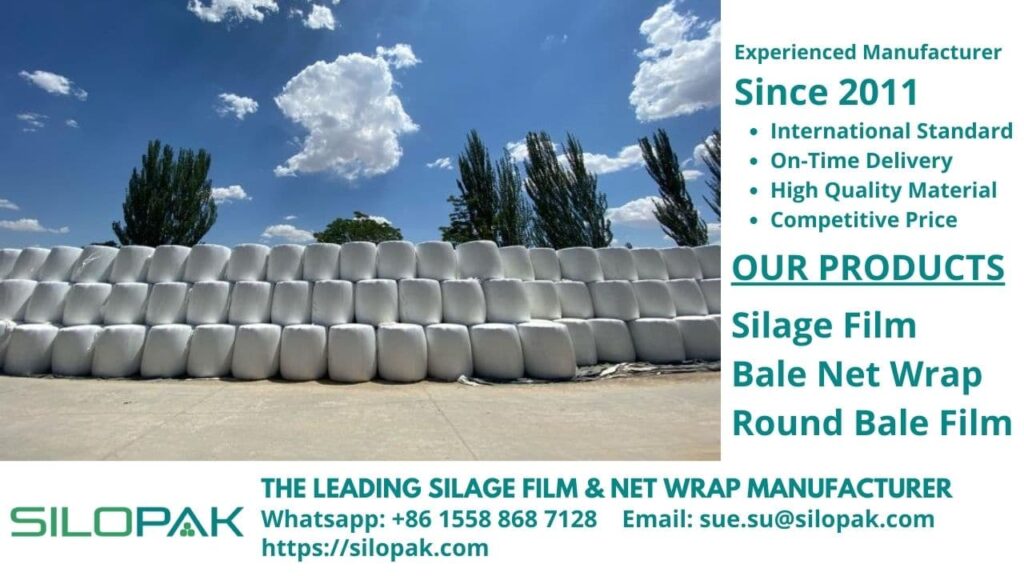
Silage fermentation is an important practice for breeders who prioritize the health and well-being of their livestock. This method transforms animal feed into a form that’s easier to digest, more nutritious, tastier, and longer-lasting, especially during challenging times like extreme summer. For dedicated breeders, preparing silage is an essential routine in the period leading up to harvest.
Initially, some breeders might purchase silage from other farms due to a lack of knowledge or resources to produce it themselves. However, once they understand the benefits of silage fermentation and learn how to make it, they often start producing their own silage tailored to their livestock’s needs. Silage is not only economical, helping to reduce the budget for animal feed, but it also complements grazing, allowing cattle to feed on fresh grass while waiting for the silage to be ready.
The economic benefits of silage production become even more pronounced for those who own land with abundant forage availability. This self-sufficiency in feed production not only cuts costs but also ensures a consistent and reliable food source for the livestock, contributing to their health and productivity.
Silage Method
Silage, or ensilage, is a method of fermenting and storing animal feed made from green leafy plants. Commonly used plants for silage include corn, grass, sorghum, grains, oats, alfalfa, and even dry matter like straw. The fermentation process preserves these green leafy plants by acidifying them, which typically happens within minutes to a few hours from the start of the ensiling process.
Specific microorganisms or bacteria are essential for aiding this fermentation process. These organisms convert carbohydrates in the plants into organic acids or alcohols, such as ethanol. An important condition for effective fermentation is the creation of an anaerobic environment, one that is devoid of oxygen.
This anaerobic environment is ideal for the microorganisms at work during fermentation. The fermentation of green leafy plants not only improves the nutritional quality of the forage but also enhances its taste, making it more palatable for livestock such as cows and other ruminants. This increased palatability ensures that the animals willingly consume the feed, thereby benefiting from its nutritional value.
Successful Silage Fermentation
Not everyone succeeds in their initial attempts at making silage, which is a key reason for the existence of a dedicated silage industry. Businesses specializing in silage production create large quantities to support farmers who struggle with or fail in their silage-making efforts, ensuring these farmers can still provide nutritious feed during challenging periods.
A common obstacle for those who haven’t found success in making silage could be a lack of understanding of the fermentation process. Fermentation is crucial in transforming green forage into a stable, nutritious, and palatable feed for animals. If these individuals grasp the significance of this process, they might be more determined and equipped to successfully produce silage on their own.
When you’re able to make your own silage, you move closer to achieving your goal of reducing feed costs. You have the advantage of sourcing fresh forage, purchasing high-quality silage film from top manufacturers, packing it yourself, and storing it in a way that suits your local environmental conditions. Moreover, the ability to produce your own silage opens up the opportunity to sell any surplus to other farmers in need, potentially creating an additional income stream.
Ultimately, mastering silage production can be a gratifying and economically beneficial endeavor, adding a valuable skill to your farming practices and contributing positively to your overall agricultural operation.
Ensilage Key Points
To ensure success in every silage-making endeavor, it’s crucial that the fermentation process goes well, enabling efficient cattle feeding and ensuring your efforts aren’t wasted. Here are several key points to focus on when preparing the necessary materials:
- As a forage harvester, you need to be prepared for tasks like collecting plant material, cutting it, storing it in trucks or carts, and transporting the forage to the silage working area. You should at least have a tractor. If that’s not available, a human-powered cart can be an alternative. Use the tractor to compact large piles of silage, which are then covered with a plastic sheet secured by heavy objects like old tires.
- In making silage bales, partially dry the cut forage until it contains 30 to 40% moisture. These large bales should be tightly wrapped in plastic to allow the air inside to escape.
- Bale wrapping is a common method for making silage bales. Consider purchasing a bale wrapper machine from a reputable manufacturer in China, known for producing versatile equipment widely exported to countries in North America, Europe, New Zealand, and others.
- Round bales are typically individually wrapped with six layers of plastic, also known as silage film.
- The anaerobic fermentation process starts about 48 hours after wrapping the forage. The tighter the packing, the more restricted the oxygen supply, resulting in acid fermentation where carbohydrates decompose into lactic, acetic, and butyric acids.
For your silage film needs, consider Silopak, a leading manufacturer in China. We offer everything required for silage making, including silage films, bale net wrap, and bale film, with production dating back to 2011. Contact us soon to acquire what you need for your first silage project.

